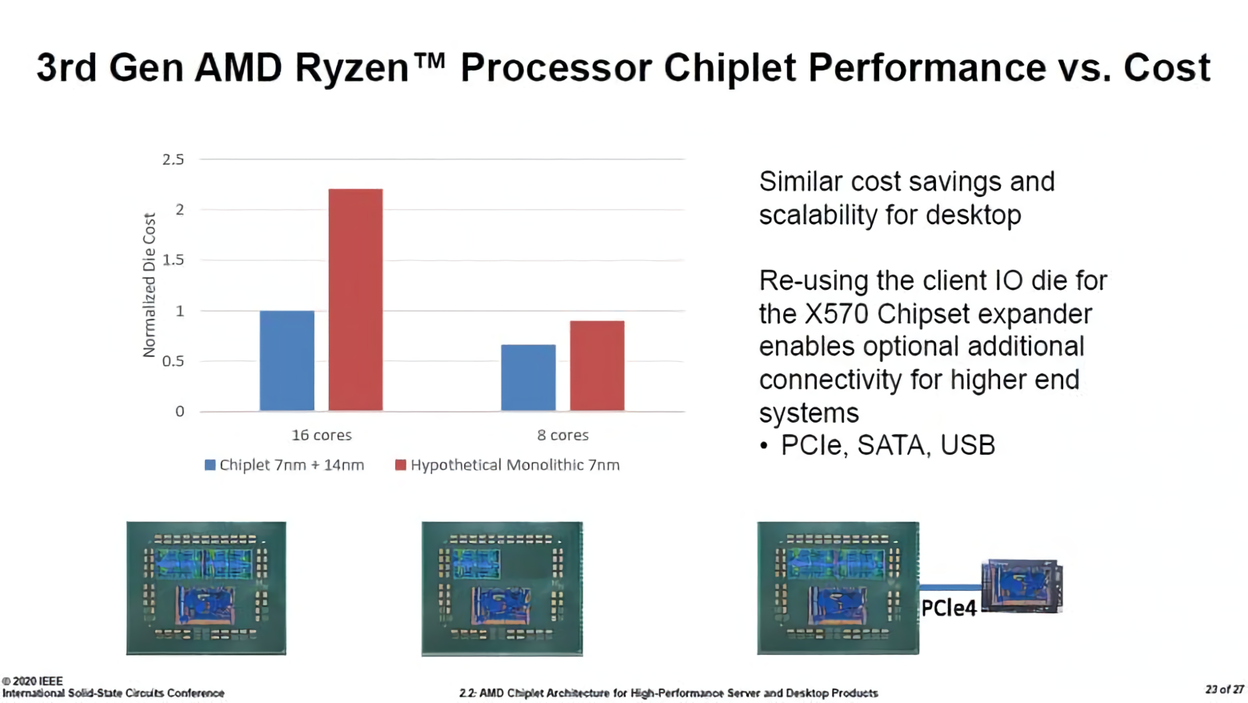Why it matters: AMD during its International Solid-State Circuits Conference (ISSCC) 2020 keynote earlier this month showed just how much financial headroom its decision to go with a multi-chip module (MCM) approach affords.
As TechPowerUp highlights, by limiting the components made on 7nm to those that would tangibly benefit from the cutting-edge fabrication process (the CPU cores) while leaving other elements like the I/O on a larger and less expensive process, significant cost savings can be achieved.
According to AMD's slides, a third generation Ryzen processor with 16 cores built on a hypothetical monolithic 7nm process would cost more than twice as much as the chiplet version that puts the I/O on a cheaper process.

Guru3D make another solid argument for AMD's use of the chiplet design. When fabricating big dies, you have a greater chance of bad yields. With lots of smaller dies on a wafer, the odds of something going south are reduced and you're likely to end up with more working CPUs.

The potential to significantly slash prices could give AMD a serious leg up on the competition, especially among budget-conscious shoppers. And to think, it wasn't all that long ago that the desktop processor space was a one-horse race.
